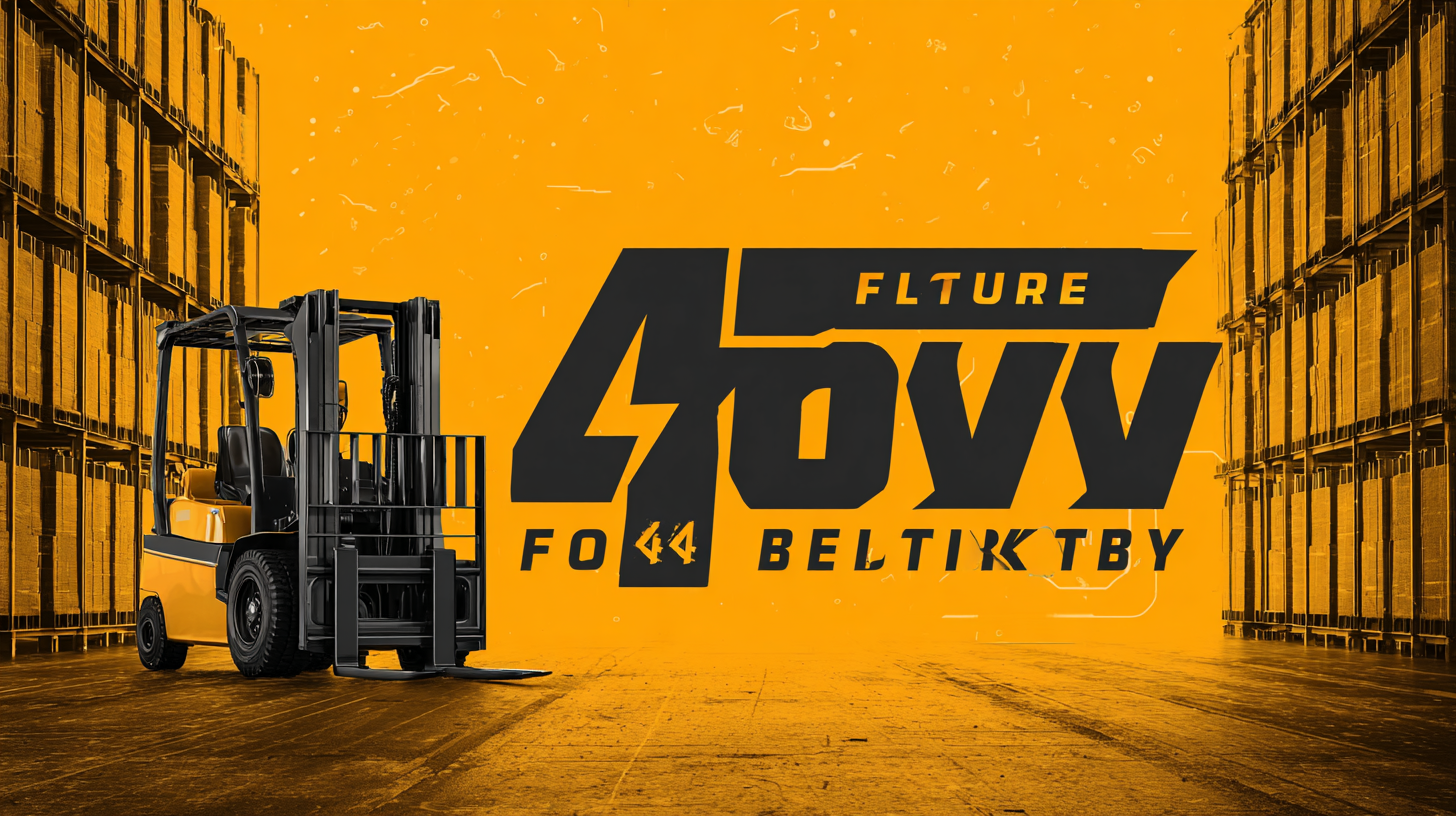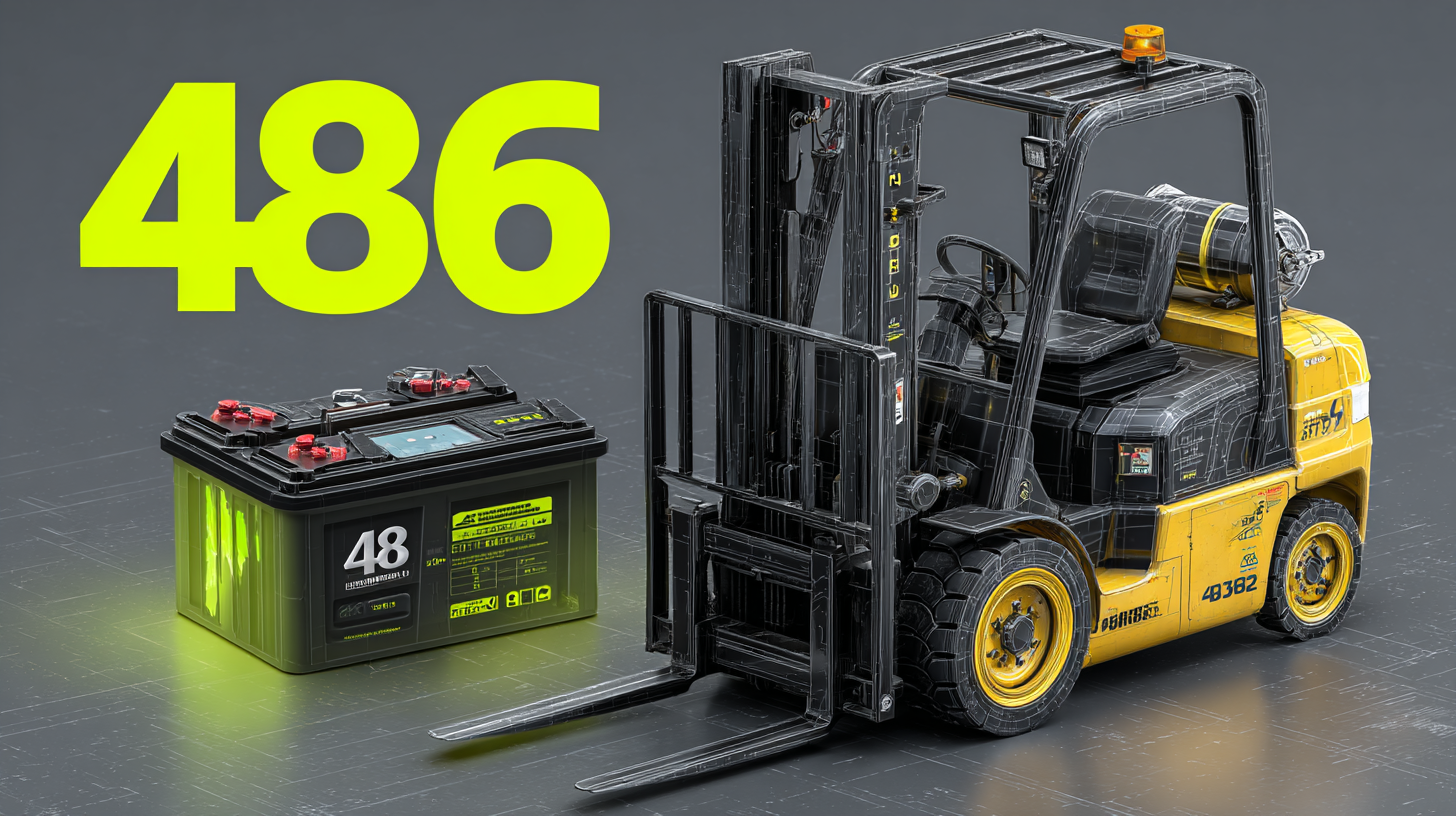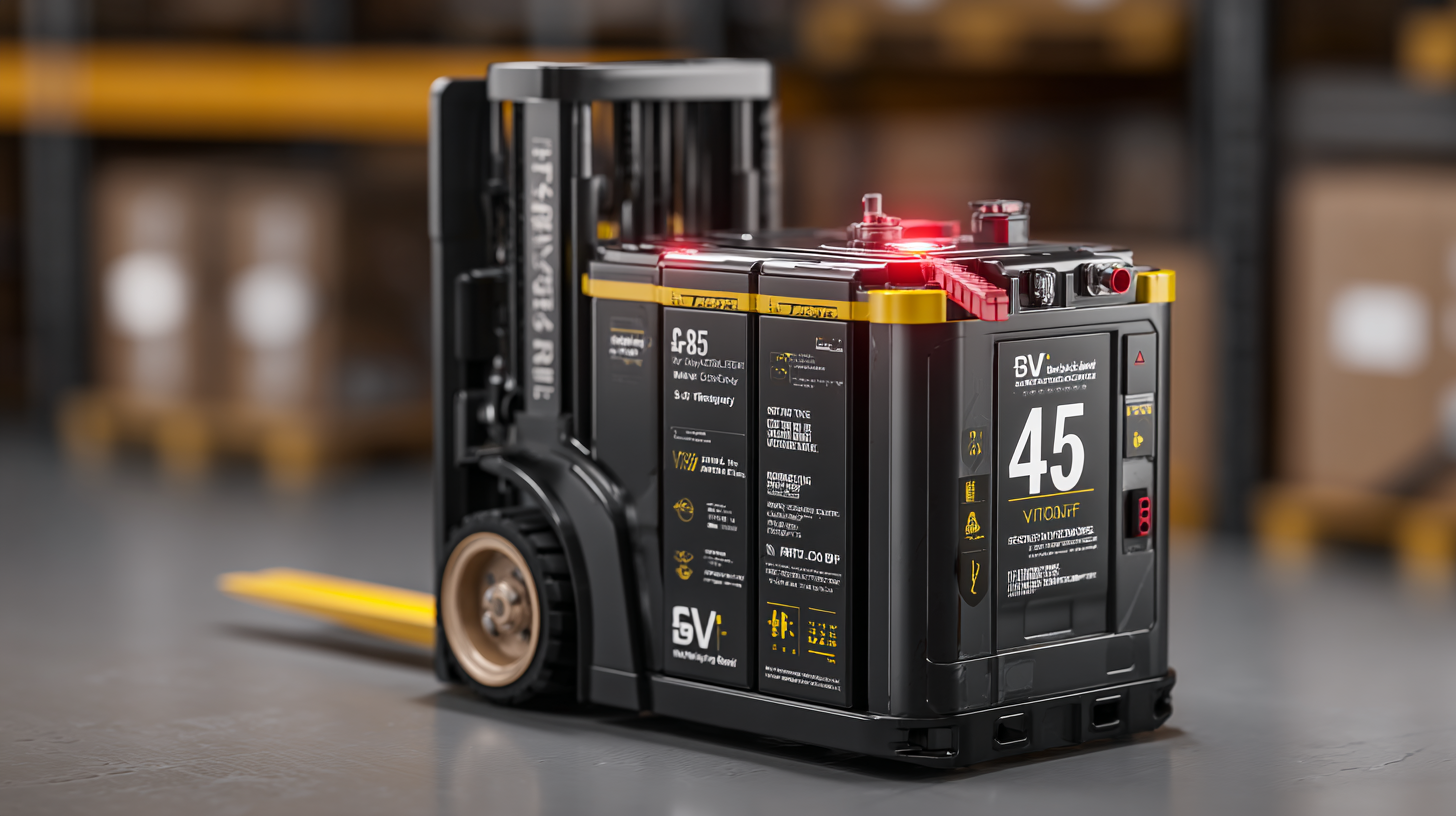Factory Tour
Future Trends in 2025 for the Best 48v Forklift Battery and Innovative Solutions for Sustainability
As we look ahead to 2025, the demand for sustainable and efficient material-handling solutions is set to reshape industries worldwide, and the 48v Forklift Battery stands at the forefront of this transformation. Recent industry reports project that the global electric forklift market will reach approximately $25 billion by 2025, driven by advancements in battery technology and a growing emphasis on environmentally-friendly practices. The 48v Forklift Battery, in particular, is gaining traction due to its balance of power, efficiency, and compatibility with various handling applications. Innovations in lithium-ion technology are enhancing performance and reducing downtime, aligning with sustainability goals across sectors. As we delve deeper into the trends and innovations of 48v Forklift Batteries, it becomes clear that these developments not only offer a competitive edge but also contribute to a greener supply chain, setting new benchmarks for operational excellence.

Emerging Technologies in 48v Forklift Batteries: A 2025 Perspective
As we look towards 2025, the landscape of 48v forklift batteries is set to undergo significant transformation driven by emerging technologies. According to a report by MarketsandMarkets, the global electric forklift market is projected to reach $15.3 billion by 2025, highlighting the escalating demand for efficient and sustainable material-handling solutions. A key area of innovation in this sector is the integration of lithium-ion technology, which provides up to 40% more energy density than traditional lead-acid batteries. This advancement not only enhances operational efficiency but also reduces frequency of replacements, leading to lower overall lifecycle costs.

Another emerging trend is the incorporation of smart battery management systems (BMS) that utilize IoT and AI technologies. These systems monitor battery health in real-time, optimizing performance and longevity while minimizing downtime. A study by ResearchAndMarkets indicates that the adoption of smart BMS could reduce maintenance costs by as much as 25% by 2025. Furthermore, sustainability is at the forefront of these developments, with manufacturers focusing on recyclable materials for battery construction and circular economy practices to ensure minimal environmental impact. As these innovative solutions materialize, the 48v forklift battery market will not only enhance productivity but also pave the way for greener supply chain practices.
Sustainable Practices in Forklift Operations: Innovations to Watch
In the rapidly evolving landscape of forklift operations, sustainability has become a central theme driving innovation. As industries strive to reduce their carbon footprint, the adoption of 48V battery systems is on the rise. A recent report from the International Energy Agency highlights that electric forklifts can reduce CO2 emissions by up to 70% compared to their diesel counterparts. As battery technology advances, new solutions are emerging that not only enhance performance but also align with global sustainability goals.
Innovative practices such as regenerative braking and smart battery management systems are gaining traction in forklift operations. These technologies optimize energy use, ensuring that batteries recharge efficiently during operation. According to a study by the Forklift Battery Manufacturers Association, the implementation of these systems can lead to an increase in operational efficiency by nearly 30%. Furthermore, as companies adopt renewable energy sources to power their charging stations, the overall sustainability of their operations improves significantly. As we move towards 2025, these trends will be crucial in shaping a greener future for material handling and logistics.
Market Demand Trends for 48v Forklift Batteries by 2025
The market for 48v forklift batteries is poised for significant growth, reflecting broader trends within the global forklift truck sector. By 2025, the forklift trucks market is projected to expand from USD 86.57 billion to approximately USD 180.47 billion by 2032, demonstrating a compound annual growth rate (CAGR) of substantial proportions. This surge can be attributed not only to increasing e-commerce demands but also to the shift towards electric-powered solutions, which offer sustainability and efficiency.
In conjunction with the growth of forklift batteries, the industrial battery chargers market is also on the rise. Estimates suggest that this market could reach USD 2,735.3 million by 2035, emphasizing the interdependence between battery technology and charging solutions. As industries worldwide pivot towards greener energy sources, the demand for innovative 48v forklift batteries will likely become a key focal point for manufacturers, leading to advancements in battery technology aimed at enhancing performance and reducing environmental impact.
Comparing Traditional vs. Advanced Battery Solutions for Forklifts
As businesses increasingly prioritize sustainability, the comparison between traditional and advanced battery solutions for forklifts has become more critical than ever. Traditional lead-acid batteries, while widely used, pose challenges such as longer charging times and reduced energy efficiency. Their shorter lifespan leads to more frequent replacements, which adds to both operational costs and environmental waste. Additionally, the heavy weight of lead-acid batteries can affect the maneuverability of forklifts, further hindering productivity in fast-paced warehouse settings.

The Role of Recycling and Circular Economy in Battery Sustainability
The transition towards sustainable practices in battery production is becoming increasingly critical as we approach 2025. A significant aspect of this shift is the integration of recycling processes and a circular economy model for 48V forklift batteries. According to a recent study by the International Battery Association, approximately 90% of lithium-ion battery components can be recycled, which highlights the enormous potential for resource recovery. By reprocessing materials such as lithium, cobalt, and nickel, businesses can reduce environmental impact and lower costs, leading to more sustainable battery systems.
Implementing a circular economy strategy not only benefits manufacturers but also plays a vital role in enhancing brand reputation among environmentally conscious consumers. As per a report by McKinsey, companies that actively participate in sustainable practices experience up to a 25% increase in customer loyalty. Moreover, businesses can take actionable steps towards sustainability by establishing battery take-back programs. These programs ensure outdated or damaged batteries are reused or recycled, closing the loop on battery life cycles.
Tips for a successful battery recycling program include partnering with certified recycling companies to guarantee compliance with environmental regulations. Additionally, educating employees about the importance of recycling initiatives can foster a culture of sustainability within the organization. This proactive approach can help maximize resource efficiency while supporting the broader goal of fostering a green economy.
Future Trends in 2025 for the Best 48v Forklift Battery and Innovative Solutions for Sustainability
| Dimension | Value |
|---|---|
| Battery Capacity (kWh) | 24 |
| Charge Time (hours) | 2.5 |
| Cycle Life (charges) | 2000 |
| Percentage of Recycled Materials (%) | 85 |
| Carbon Footprint (kg CO2eq) | 120 |
| Expected Lifetime (years) | 5 |
| Cost (USD) | 5000 |
| Percentage Improvement in Efficiency (%) | 15 |







